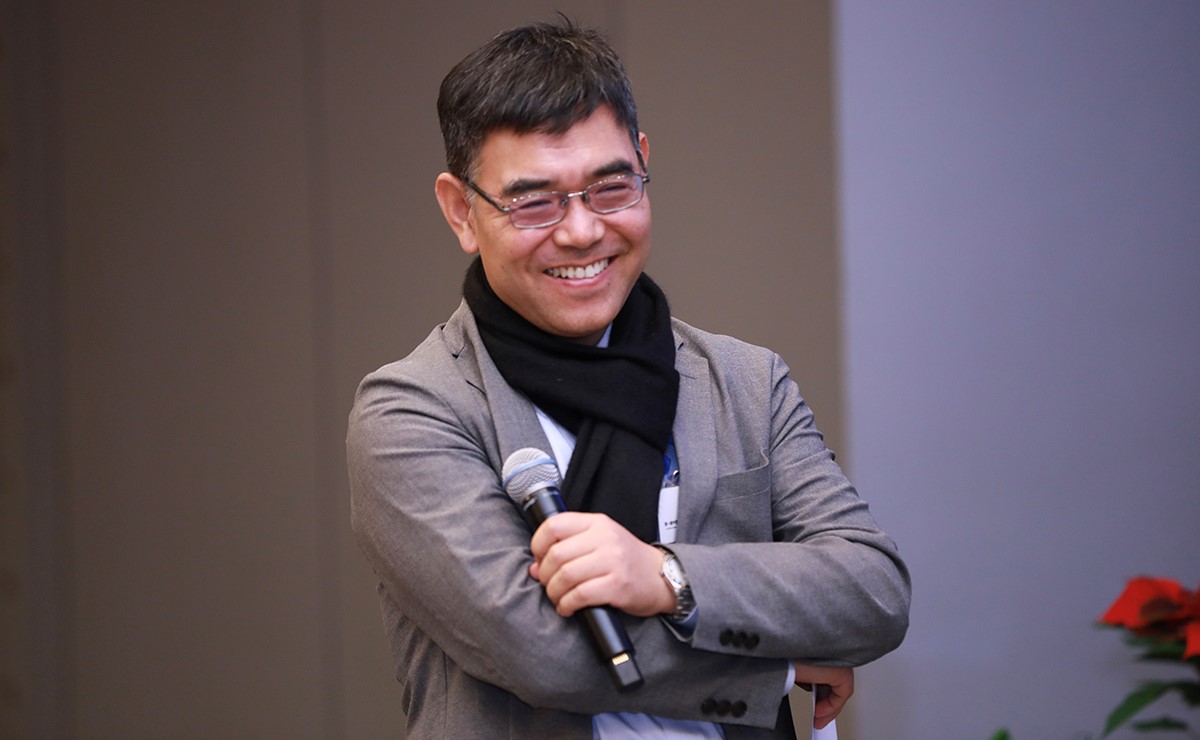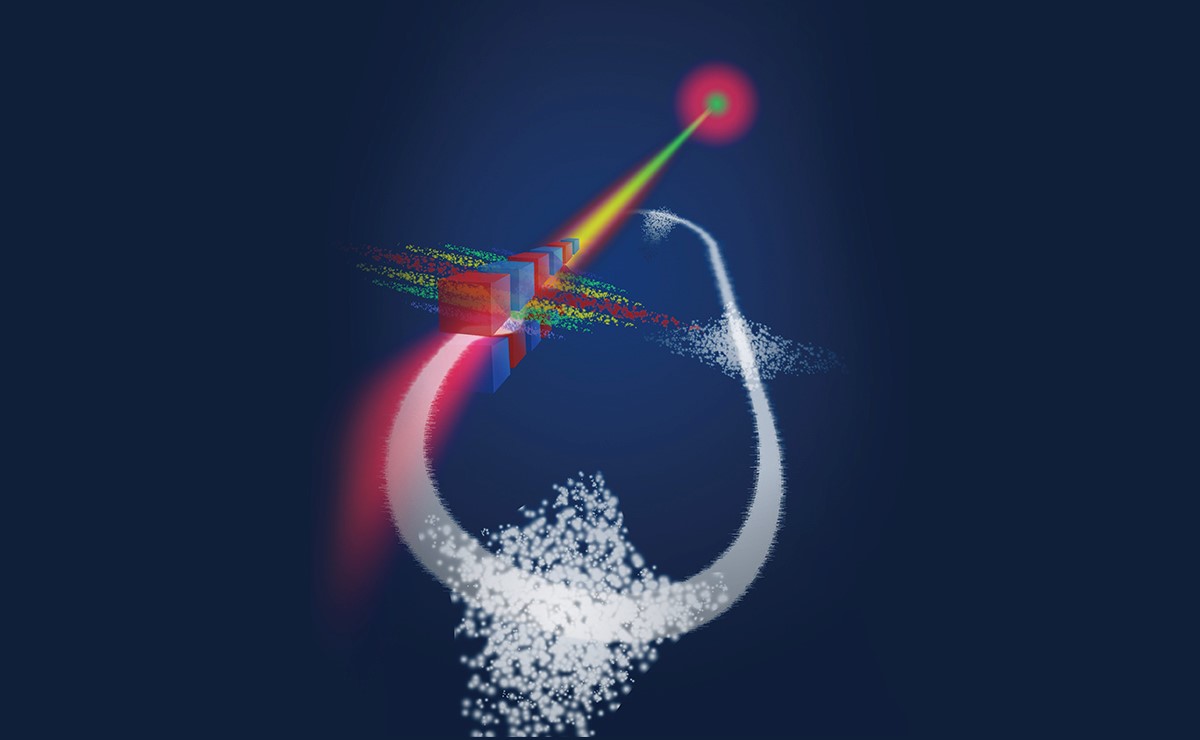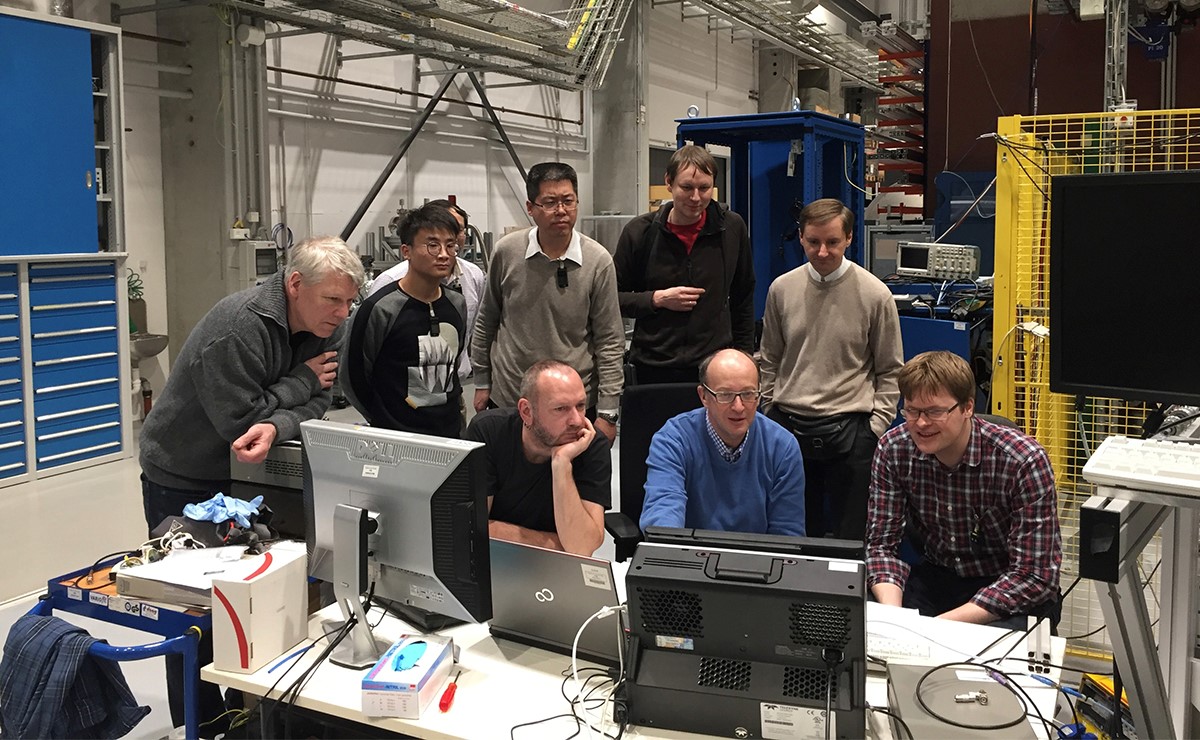A scheme that causes electrons to form microbunches’ could yield high power and coherent extreme-ultraviolet light, and perhaps the means to produce circuits faster.

Chuanxiang Tang is a Professor in Department of Engineering Physics at Tsinghua University. He is also deputy president of Chinese Particle Accelerator Society, and on the panel on Advanced and Novel Accelerators (ANA) for theInternational Committee for Future Accelerators.
A new source of high-power extreme-ultraviolet (EUV) light, steady-state microbunching (SSMB), is peeking over the horizon, following a proof-of-principle experiment published in Nature1. Corresponding author, Chuanxiang Tang, says the potential power of SSMB EUV could be used to etch more-intricate patterns onto semiconductor circuits, which are used to store and transfer data in devices.
“A high-power EUV source is of crucial importance for high-volume manufacturing using EUV lithography,” explains Tang, a professor in theDepartment of Engineering Physics at Tsinghua University. EUV lithography reduces the steps needed to manufacture circuits by bypassing multi-patterning, a multiple-exposure method currently used to get finer circuit pattern resolution. But power is the key to realizing viable EUV lithography, says Tang, since the optical system is reflective and the power loss of each of the 11 reflections exceeds 30%.

Stored electron bunches are modulated by a laser in an undulator. They become ‘microbunched’ after one complete revolution in the storage ring and produce coherent radiation at the laser wavelength and its higher harmonics.
Rolling with the bunches
The concept of SSMB was first proposed in 2010 by two scientists at Stanford University, Daniel Ratner and Alexander Chao. Published in Physical Review Letters2, their idea was that electrons circulating in a synchrotron are organized into small bunches that support the emission of coherent light. However, the SSMB concept lay dormant for several years because its potential was not immediately recognized and it is difficult to perform experiments as most synchrotrons aren’t suitable.
“After the paper was published in 2010, I was expecting some interest from the community, but nothing happened for five years,” explains Chao. “In 2015, I finally realized that if there would be any response to this very interesting and promising idea, I would have to push for it. So, in 2015, I started to give talks about the idea.”

A group from Tsinghua University, Helmholtz-Zentrum Berlin and Physikalisch-Technische Bundesanstalt experimentally tested steady-state microbunching at the Metrology Light Source, a synchrotron in Berlin.
In 2016, following a conference talk on SSMB from Chao, scientists from Tsinghua University and Helmholtz-Zentrum Berlin expressed interest, and a collaboration was born. A plan was devised to experimentally test SSMB at the Metrology Light Source, a synchrotron in Berlin owned by the Physikalisch-Technische Bundesanstalt, who became a third collaborator. The Metrology Light Source is one of the few synchrotrons at which SSMB could be experimentally investigated, as it operates in a ‘low-alpha mode’, in which the circulation times of the electrons are nearly independent of their energies.
In the experiment, a pulsed near-infrared laser is fired as electrons pass through a periodic arrangement of alternating magnets in the ring, causing them after one circulation to form localized spatial patterns of small bunches, separated on the scale of the laser wavelength. Importantly, these microbunches should emit light in a coherent manner, allowing higher power emission.
The key, says Tang, was to maintain phase correlation between the electron energies introduced by laser fields over a complete revolution in a storage ring. A precise, turn-by-turn phase correction created steady-state microbunching.
Circuit maker
A completely operational SSMB source has still to be demonstrated. It will require using a special magnet lattice and a high-power optical enhancement cavity, according to Tang.

Dr Alexander Chao (centre), a co-author on the paper, works with colleagues to experimentally test steady-state microbunching (SSMB) in Berlin. He came up with the theory behind SSMB while at Stanford University, where he was a professor until he retired in 2019.
If realized in this way, the technique could also prove useful for fundamental experiments in condensed-matter physics that require high-flux, energy-tunable EUV photons, notes Tang. However, with the global EUV lithography market forecast to grow more than 20% between 2020 and 2021, Tang expects industry interest to be the driving force.
If funding is forthcoming, the Tsinghua team hope to construct a dedicated SSMB storage ring in Beijing, says Tang.“If things go well, we plan to build it in the following five to six years.”
References
[1] Deng, X.et al. Experimental demonstration of the mechanism of steady-state microbunching. Nature 590, 576–579 (2021)
[2] Ratner, D. F. & Chao, A. W. Steady-state microbunching in a storage ring for generating coherent radiation. Phys. Rev. Lett. 105, 154801 (2010).

